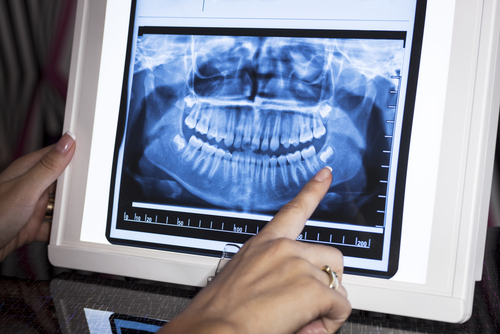The unparalleled English author, playwright, and humorist Oscar Wilde once said, “with age comes wisdom, but sometimes age comes alone.” For those that make a habit of going once or twice a year to the dentist, the prospect of a dental x-ray is nothing new, but perhaps at one time they have heard some form of this puzzling pronunciation: “Well, you have two impacted wisdom teeth, one is breaking through, and one isn’t there at all.” Indeed, sometimes wisdom never comes.
The teeth historically known as wisdom teeth are the third set of molars, set right in the back of the mouth. These are so named because they usually don’t form and break through the gums until the person is anywhere between the ages of 17 and 21, being those things that age brings. As such, these aren’t normally something that pediatric dentists will focus on, in terms of their patients. Instead, clients are more likely to hear about them around the time they go for their final dental service before high school graduation.
Getting to Know Your Wisdom Teeth
The wisdom teeth have a purpose just as any other set of teeth. Looking into the mouth, the front teeth are the incisors, perfect for cutting food; the pointy teeth flanking the four incisors are the canines, meant to help tear the food; the two teeth after the canines are the premolars, which help grind food as a person chews; finally, all the teeth after the premolars are the molars, meant to crush the food and prepare it to be swallowed. Molars are the biggest of the teeth, the workhorses in the mouth.
Wisdom teeth are the final set of molars, all the way in the back. They provide that final bit of smashing power, likely an evolutionary result of adults eating more complex cuisine than the softer foods favored by young people.
Why Remove Wisdom Teeth?
Wisdom teeth present a puzzling conundrum: if we evolved to have them, then why do we need to remove them? And why are some people born without them in the first place? The answer may very well lie in the same truth that got us here in the first place: evolution. As any pediatric dentist will tell you, a child’s mouth (and by turns, an adult’s, too) is too narrowly shaped, too small to eventually house wisdom teeth.
For those who were born with them, once they breach the gums there is often no room for them and they begin to cause problems as they encroach into the space of other teeth. And those born without them, or with impacted teeth? Their bodies may very well just be ahead of the curve in terms of evolving away from them.
Knowing When to Remove Them
The surest way to know that it’s time to remove your wisdom teeth is by attending your dental service regularly. Studies have shown that by taking kids to their pediatric dentistry early in life, they are more likely to continue to see their adult dentist often, who can let them know that it’s time to have their wisdom teeth removed. Other signs include:
- Pain in the mouth or jaw
- Pushing on other teeth, causing them to fall out of alignment
- Excessive cavities brought on by swollen gums
- Sinus pressure out of season from allergies or colds
The dentists at Timpanogos Pediatric Dentistry are happy to start your child down the path to good oral health. As they get older, we can monitor the growth of their wisdom teeth and let them know when it will be time to have them removed. For those looking to start seeing a dentist, or who just need to schedule an appointment, feel free to contact our office. We would be happy to see you.





